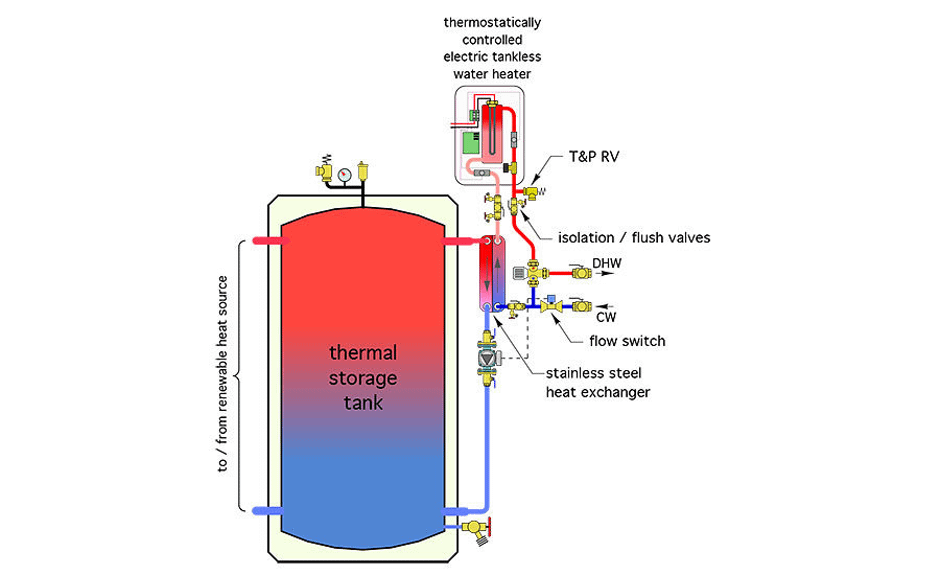Water-to-water heat exchangers use a heat transfer fluid (often propylene glycol and water) that circulates through the solar collector, absorbs heat, then passes through a heat exchanger to transfer its heat to potable water in a storage tank. In cold weather, heat-transfer fluids, such as propylene glycol antifreeze, prevent the solar collector from freezing. Water-to-water heat exchangers have either one or two barriers (single or double walls) between the heat-transfer fluid and the domestic water supply. Heat transfer fluid will be drained from a gap in a “double-wall” heat exchanger before it reaches potable water.
Speaking of Heat Exchangers, specialised boiler tubes are utilised in the proper functioning of such exchangers. SA179tube.com Is one leading Manufacturer, Supplier & Stockist Of A179 Tube & SA 179 Tubes.

A single-wall heat exchanger is a tube or pipe surrounded by fluid. Heat-transfer fluid can either flow through or surround tubing, while potable water can be the other fluid. A simple way to build a heat exchanger is to put a small pipe inside a larger pipe and circulate the fluid inside the outer pipe.
Heat exchangers with double walls have two walls between the two fluids. If the heat-transfer fluid is toxic, then two walls with drainage between them and leak detection are required. These are often used even for non-toxic heat transfer fluids, such as propylene glycol (antifreeze). In case of leaks, the double walls protect the potable water supply.
Double-wall heat exchangers increase safety. An example of a double-wall, liquid-to-liquid heat exchanger is the “wrap-around heat exchanger,” in which a tube is wrapped around and bonded to the outside of a hot water tank. In order to reduce heat losses, the tube needs to be adequately insulated.
They are less efficient because heat must pass through two surfaces rather than one. A double-wall heat exchanger must be larger than a single-wall heat exchanger to transfer the same amount of heat.
Solar heating systems with air-heating solar collectors do not usually require a heat exchanger between the collector and the air distribution system. The systems that use air heater collectors to heat water use air-to-liquid heat exchangers, which are similar to liquid-to-air heat exchangers. The radiator on the front of a large truck engine looks similar to these.
In the secondary circuit, hot tap water can be produced in one of two ways: • Instantaneous heating – The water is heated as soon as it is requested. Hot water can be produced instantly using either a secondary heat exchanger, such as a brazed heat exchanger (BHE), or a bi-thermic heat exchanger. Heating that is semi-instantaneous – Hot water is not always produced on demand. Rather, hot water from the primary circuit is stored in a high-temperature tank.
As needed, it is used for space heating and is also used by a boiler to heat water. Typical solar and water heating tasks for Alfa Laval heat exchangers include: transferring heat from solar panels to buffer tanks via a heat exchanger. Heat is transferred from the hot water in the buffer tank to the taps. Apartments in multifamily houses are heated via satellite systems, which are centralised heating systems. Each apartment has a BHE module that provides hot water for space heating and tap water heating. In a charging kit, a heat exchanger is used as a circulation system to prevent stratification and stagnant water in the buffer tank when bacteria and legionella are a concern.

SA179tubes.com is a leading supplier, stockist, manufacturer & exporter of A179 Tube & SA 179 Tubes. Get in touch with us for the best rates & availability.
